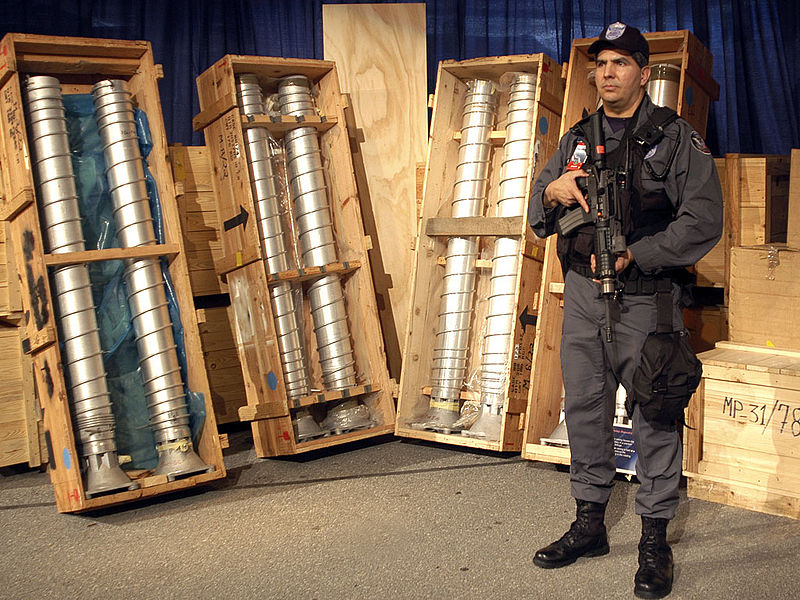
Libyan centrifuges for nuclear enrichment ended up in U.S. custody / Wiki
Before the rebels finish celebrating — and catch Libyan strongman Muammar Gaddafi (or don’t) — it’s worth noting that 42 years of dictatorship can leave some dangerous residue behind. Olli Heinonen, a senior fellow at the Belfer Center for Science and International Affairs at Harvard University, is a former deputy director of the International Atomic Energy Agency, and reminds us of some possibly unpleasant Libyan fallout:
In December 2003, Muammar Gaddafi renounced his weapons of mass destruction program, and agreed to dismantle them in a verifiable manner. This proceeded relatively swiftly. Libya’s uranium enrichment program was taken apart, and sensitive materials and documentation ranging from nuclear weapons design information to gas ultracentrifuge components were confiscated.
Libya’s highly enriched uranium, the material that can be used to make nuclear weapons that Libya used peacefully for years to fuel its Tajoura research reactor, took longer to remove. But after several stand-offs, the last consignment of spent fuel was flown out of Libya in December 2009. That was all good news.
Today, the world is at the cusp of yet another major development in Libya – the end of the Gaddafi regime. Even amid the euphoria, it is clear that Libya faces huge challenges in reshaping the political landscape and recovering from the ravages of dictatorship.
And nuclear security concerns still linger. As a result of three decades of nuclear research and radioisotope production, Libya’s research center in Tajoura on the outskirts of Tripoli continues to stock large quantities of radioisotopes, radioactive wastes, and low-enriched uranium fuel. We should be thankful for the joint U.S.-Russian-IAEA effort to remove the highly enriched uranium stocks from Libya—doing so has prevented insurgents or terrorists from acquiring the fissile material, or Gaddafi from launching a ‘crash’ program to build a nuclear bomb like Saddam Hussein attempted with highly enriched uranium from a research reactor during Desert Storm in 1991. However, the remaining material in Tajoura could, if it ended up in the wrong hands, be used as ingredients for dirty bombs. The situation at Tajoura today is unclear.
We know that during times of regime collapse, lawlessness and looting reign. We saw that substantial looting of nuclear and radioactive material storage took place at the Tuwaitha nuclear research center near Baghdad when Saddam Hussein was toppled in 2003. Most likely due to pure luck, the story did not end in a radiological disaster.
Relying on luck is not an option. The current regime in Libya is accountable for the security of nuclear and radioactive material. But once a transition occurs, the Transitional National Council (TNC) will become responsible, as it will be responsible for all weapons and dangerous materials recovered from Gaddafi’s regime, including a much-publicized stockpile of bulk mustard gas at a site southeast of Tripoli. The TNC needs to be aware of the nuclear and radioactive material sitting around Tajoura. And it should assure the world that it accepts its responsibility and will take the necessary steps to secure these potentially dangerous radioactive sources.
A version of this post originally appeared at powerandpolicy.com, the Belfer Center’s global affairs blog.


